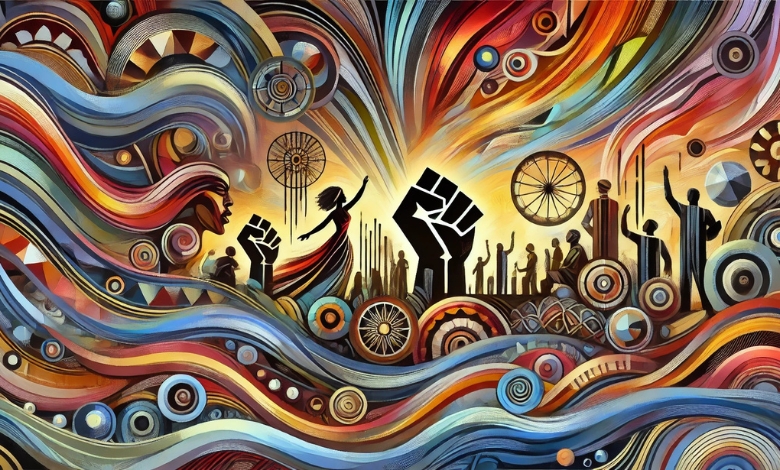Explore the legacy of Jet Magazine covers, showcasing Black history, culture, and excellence through decades of iconic visual storytelling.
Jet Magazine covers hold a legacy that transcends glossy pages. They are more than just snapshots; they are cultural artifacts, chronicling pivotal moments in Black history, culture, and identity. For decades, Jet’s covers have been a platform for Black excellence, style, and resilience. So, let’s take a journey through this iconic magazine’s visual storytelling and discover why it continues to matter.
What You'll Discover:
What Made Jet Magazine Covers So Iconic?
Jet Magazine wasn’t just another publication; it was a lifeline for the Black community. Founded in 1951 by John H. Johnson, Jet catered to an audience that mainstream media often overlooked or outright ignored. The covers of Jet weren’t just about aesthetics—they were statements.
A Platform for Representation
At a time when Black faces were seldom seen in media, Jet’s covers showcased beauty, talent, and accomplishments from within the community. It’s impossible to overstate the impact of seeing a reflection of oneself on a magazine cover during an era dominated by exclusion.
Curating Black Excellence
From trailblazing athletes like Muhammad Ali to soulful legends like Aretha Franklin, Jet covers celebrated individuals who shaped culture and history. Each issue became a symbol of pride and progress, reminding readers that greatness was not only attainable but inevitable.
A Mirror to Society’s Struggles and Triumphs
Jet Magazine didn’t shy away from addressing societal issues. The 1955 cover featuring 14-year-old Emmett Till’s story was one of the most harrowing and transformative moments in American journalism. By bringing the brutal realities of racism to the forefront, Jet played an essential role in catalyzing the civil rights movement.
The Evolution of Jet Magazine Covers
Jet Magazine covers evolved with the times, each era adding a new dimension to their cultural relevance. Let’s break it down by decades to see how these covers mirrored the zeitgeist.
The 1950s: Breaking Barriers
In its infancy, Jet Magazine’s covers often featured entertainers, educators, and activists who symbolized hope and opportunity. The imagery was simple but powerful, with bold typography framing portraits of achievers. It wasn’t just about selling magazines; it was about showcasing possibility in a world rife with limitations.
Relatable Example
Imagine a young girl in the 1950s, flipping through Jet and seeing Dorothy Dandridge gracing the cover. For her, it wasn’t just a glamorous photo; it was proof that her dreams of stardom weren’t as far-fetched as society made them seem.
The 1960s: The Civil Rights Movement
The 1960s brought an edge to Jet’s covers. With the civil rights movement at its peak, Jet became more than a cultural guide; it became a political instrument. Covers featured leaders like Martin Luther King Jr., alongside stories that documented the fight for justice.
A Radical Angle
These weren’t just ‘news’ stories; they were stories of survival and defiance, curated for a community that needed to stay informed and inspired. Jet wasn’t merely reporting history; it was shaping it.
The 1970s: Embracing Black Power
By the 1970s, Jet’s covers exuded confidence and boldness. The Black Power movement inspired a shift towards unapologetic self-expression. This era’s covers celebrated natural hair, Afrocentric fashion, and voices of rebellion.
A Connection Point
Think of a teenager in 1975 rocking their first Afro. Seeing Pam Grier on Jet’s cover would’ve felt like validation—a “you’re doing it right” moment.
The 1980s and 1990s: Modern Icons
As Black culture began to dominate mainstream entertainment, Jet’s covers became home to emerging superstars. From Michael Jackson’s groundbreaking moments to Oprah Winfrey’s rise, Jet captured these transformative years with flair.
Nostalgic Fun
Who doesn’t remember rushing to the store to grab a copy with their favorite artist’s face on the cover? It was more than a magazine; it was a collectible.
The 2000s and Beyond: A Shift in Dynamics
By the 2000s, the media landscape was shifting rapidly with the rise of digital platforms. Jet continued to adapt, celebrating cultural achievements while navigating the challenges of print media in a digital age.
The Digital Pivot
In 2014, Jet transitioned to an all-digital format. While the physical covers are no longer in circulation, the magazine’s visual and cultural impact lives on in digital archives.
Why Jet Magazine Covers Still Resonate Today
Even in the digital age, the essence of Jet Magazine covers remains relevant. Here’s why:
They Inspire Legacy
The covers remind us of the trailblazers who paved the way. They’re not just images; they’re stories of resilience, ambition, and triumph.
A Blueprint for Representation
Jet laid the groundwork for how media can represent marginalized communities. Its covers are a lesson for modern media on authenticity and inclusivity.
Cultural Nostalgia
For those who grew up with Jet, the covers evoke a sense of nostalgia. They’re a time capsule of eras gone by, capturing milestones that defined generations.
The Enduring Impact: Lessons for Today’s Media
The legacy of Jet Magazine covers offers valuable lessons for today’s media landscape:
- Authenticity Matters
- Jet didn’t chase trends; it celebrated truth. Modern media can learn from its commitment to authenticity.
- Representation is Revolutionary
- Showcasing diversity isn’t just ‘nice to have’—it’s transformative.
- Stories Shape Culture
- Jet’s covers were more than photos; they were narratives that shaped cultural consciousness.
Key Takings
- Jet Magazine’s legacy celebrates impactful stories and groundbreaking representation.
- Its covers served as mirrors, windows, and canvases, reflecting identity and possibility.
- Jet showcased who we were, who we could be, and the journeys in between.
- Even in a fast-moving world, Jet reminds us to look back and appreciate how far we’ve come.





